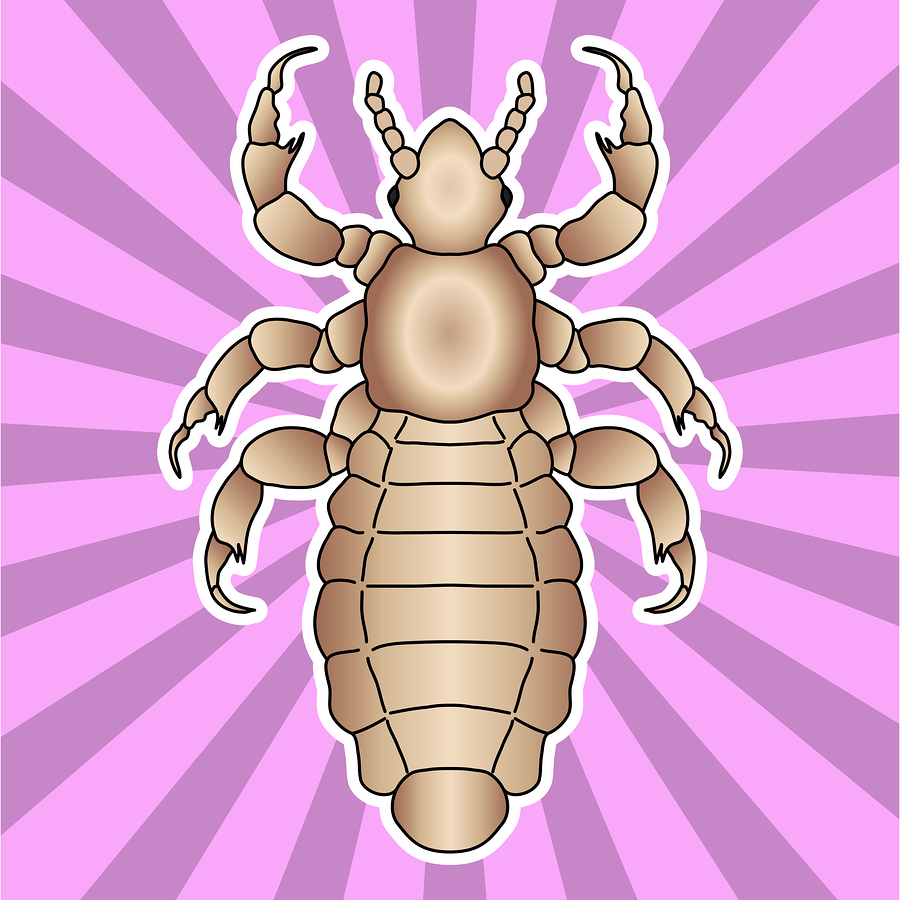Dispelling Myths: Head Lice VS Other Pests
Head Lice VS Other Pests

There is much misinformation and confusion surrounding head lice and other similar pests. Much of this misinformation comes from confusing the characteristics of common parasites with head lice. Upon discovering a lice infestation many people worry about the bugs infesting their home, eggs being in the carpet, living on other places of the body, burrowing into their skin, infesting their pets and carrying disease. None of these characteristic apply to head lice.
Head Lice
Notable Characteristic: Infests Human Head
Spread by Head to Head Contact
Head lice feed only on the blood of humans and lives only on the human head. Without a host, the louse will begin to dehydrate after its first missed feeding and will die in 24-48 hours. In addition to using human blood as a food source, lice also need to be on the scalp for its constant temperature. They cannot survive drastic temperature changes or extreme hot/cold environments. Nits (eggs) must incubate to hatch and will not achieve the proper temperature if they are not near the scalp. Nits are also glued on to the hair strand and will not fall out from styling or washing the hair. Head Lice is spread via head to head contact 99% of the time: adult bugs use the hair strand as a bridge to crawl onto another person’s head and can do so in three seconds. Head lice is only spread 1% of the time from surfaces including hair brushes, hats, combs, bedding, etc.
http://www.cdc.gov/parasites/lice/head/index.html
Scabies
Notable Characteristic: Burrows into Skin
Spreads through Skin to Skin Contact
Scabies are microscopic mites that burrow into the skin where they live and lay their eggs. A scabies infestation will appear as a rash on various areas of the body including hands, elbows, armpits, etc. Scabies do not inhabit the head and will only be found on the body from the neck down. They are typically picked up from prolonged skin to skin contact (holding hands, cuddling, etc.) but can sometimes be picked up from the bedding, towels and clothing of someone with an infestation. They can survive 48-72 hours without a human host.
http://www.cdc.gov/parasites/scabies/gen_info/faqs.html
Bed Bugs
Notable Characteristic: Infests the home
Spreads by traveling and sleeping in an infested place
Bed bugs are a parasite that live in the home rather than on their host. They typically live within 8ft of where their host sleeps and come out at night to feed. They can live in the crevices of furniture and in the gaps between walls and the floor. It can be difficult to recognize the presence of a bed bug infestation as the bites can take up to two weeks to appear, and are often misidentified as flea or mosquito bites. Bed bugs come from staying in a hotel or house that has a current bed bug infestation. They can hide in luggage or clothing and travel back home with the visitor to start a new infestation.
http://www.cdc.gov/parasites/bedbugs/faqs.html
Fleas
Notable Characteristic: Jumps on to Host, Feed on Animals
Spreads by Hopping onto an Animal and Entering the Home
Fleas are a parasite that primarily affect animals including cats and dogs. They are introduced into the home by jumping onto the pet when they are outside and being carried inside with them. Once an infestation is in the home they can jump on to other inhabitants of the home. They do not inhabit the human body or hair but they can bite and feed on humans, typically on the legs and feet. The adult bugs can live on pets but their eggs and larvae fall off the animal as it walks around. When this happens, fleas and eggs are then found on carpet and in areas the pet frequents. They can be found in cracks, corners, gaps, carpet and rugs. The adult flea can potentially survive for months without feeding which allows them to infest a home.
http://www.cdc.gov/dpdx/fleas/index.html



